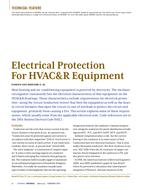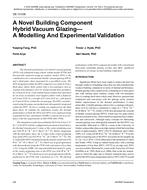Air will leak through a building envelope that is not well sealed. This leakage of air decreases the comfort of a residenceby allowing moisture, cold drafts, and unwanted noise to enter, and air leakage can account for up to 40% of the energy usedfor heating and cooling in a typical residence.With nearly a mile of exterior joints in a typical residence that can leak air, knowingwhich joints leak the largest quantity of air allows for the most strategic placement of sealant. This two-part paper describes anextensive investigation to quantify the leakage characteristics of various types of joints and openings in a residential structure.All in all, 17 different joints/openings were characterized through both laboratory and real-house measurements using fan pressurization.Part 1 presents the methods and results associated with the air leakage of the individual joints/openings. Part 2 adaptsthese individual results to the whole house, including an examination of the joint leakage interdependence in the wall cavity.
Presented at Thermal Performance of Exterior Envelopes of Whole Buildings XII, December 2013
Citation: Thermal Performance of Exterior Envelopes of Whole Buildings XII
Product Details
- Published:
- 2013
- Number of Pages:
- 11
- File Size:
- 1 file , 5.2 MB
- Product Code(s):
- D-BldConf13-29


